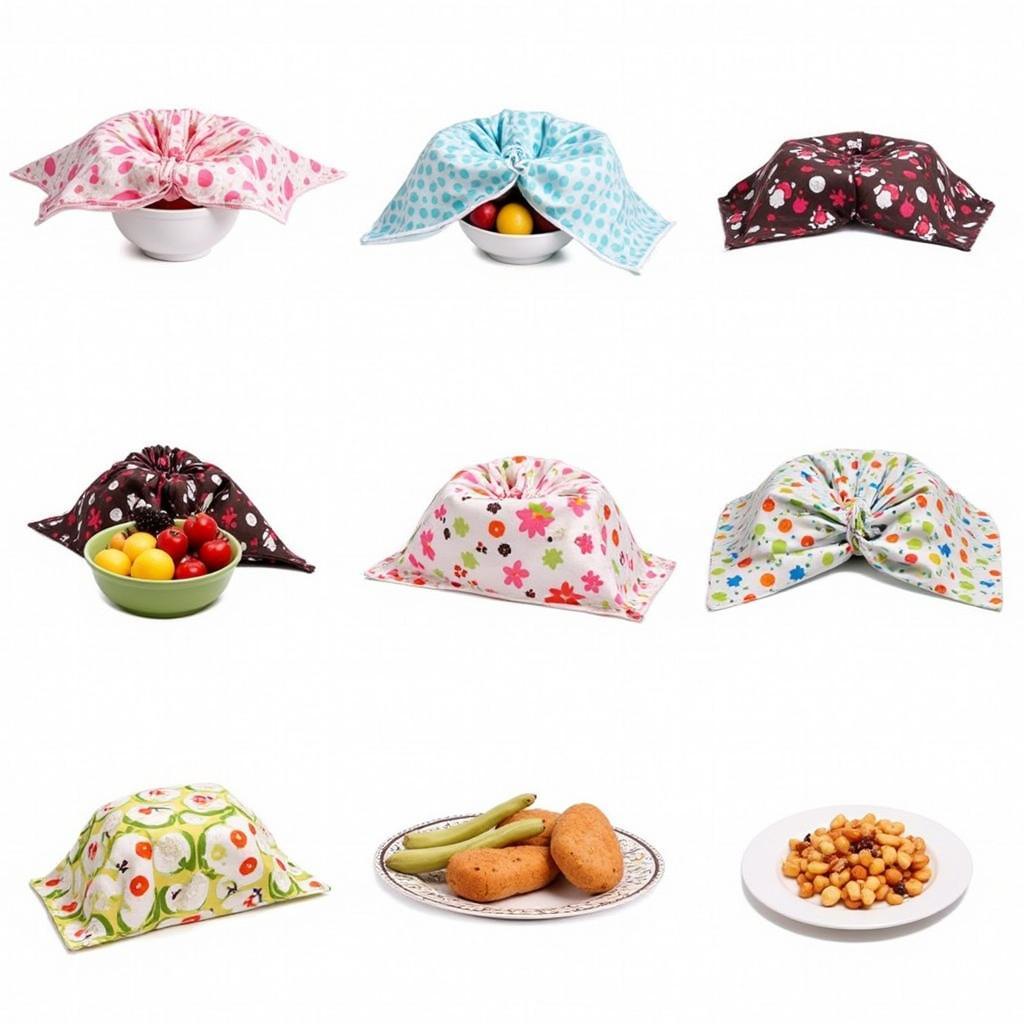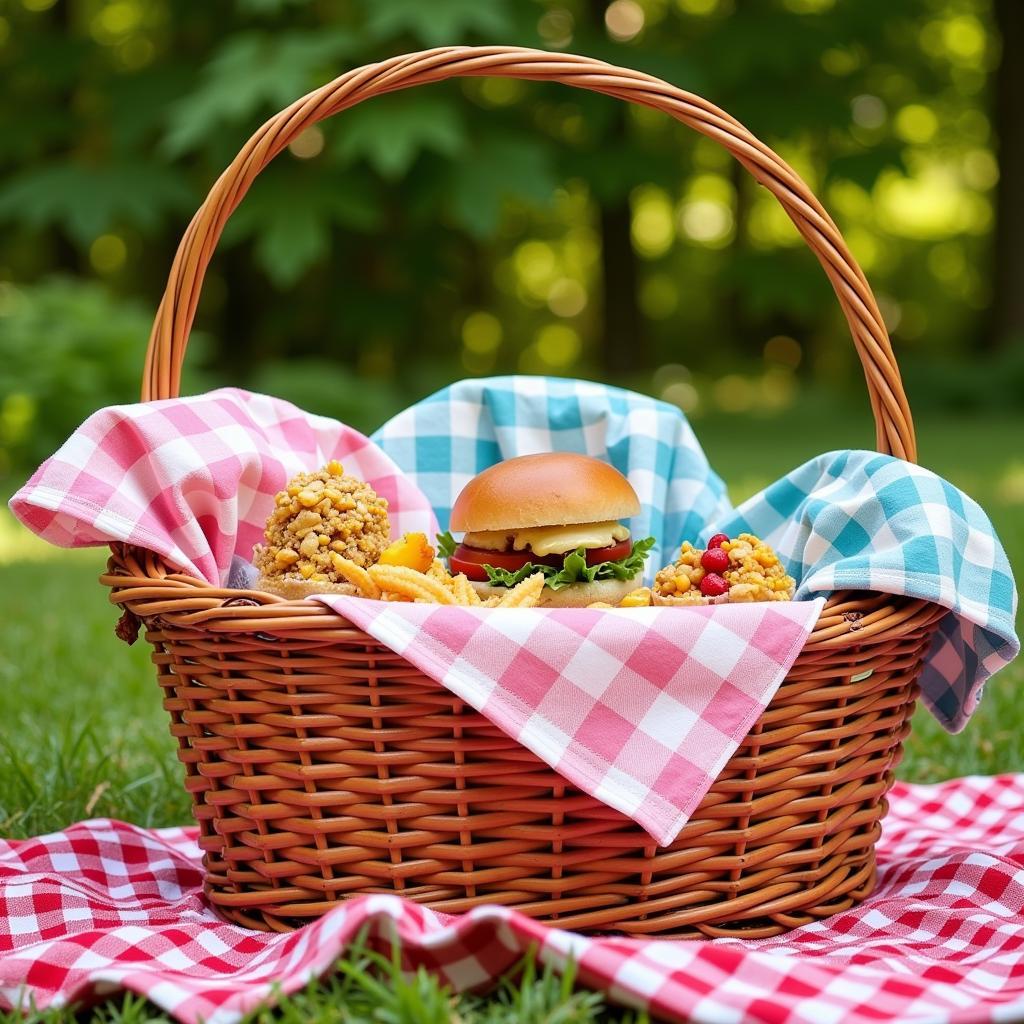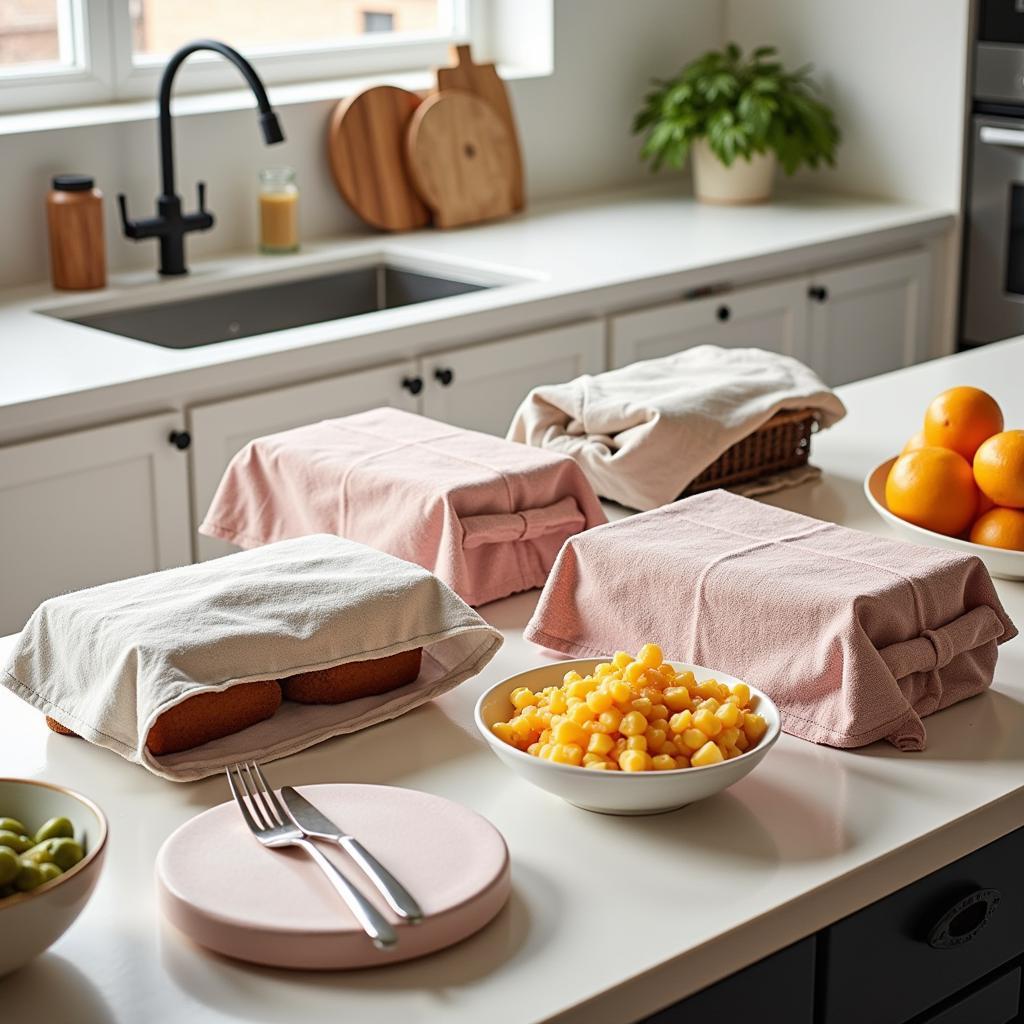Cloth Food Covers are a simple yet effective way to keep your food fresh, delicious, and protected from pesky insects. Whether you’re hosting a picnic, storing leftovers, or simply trying to keep your kitchen counter clean, cloth food covers offer a reusable and stylish alternative to plastic wrap or aluminum foil. From understanding the different types of cloth food covers available to learning how to care for them, this guide will provide you with everything you need to know.
Using cloth food covers is a small change that can make a big difference in your kitchen. They’re not only practical but also contribute to a more sustainable lifestyle by reducing your reliance on single-use plastics. Beyond functionality, these covers can add a touch of elegance to your dining experience. Imagine a beautifully patterned cloth cover gracefully draping over a bowl of fresh fruit or a freshly baked loaf of bread. It elevates the presentation and adds a touch of homemade charm. And speaking of homemade, you might enjoy our guide on food storage wrap. It delves into various methods for preserving your culinary creations.
Choosing the Right Cloth Food Covers for Your Needs
Cloth food covers are available in a variety of materials, shapes, and sizes. Understanding the differences will help you choose the perfect cover for your specific needs. Materials like cotton, beeswax wraps, and linen each offer unique benefits. Cotton is a breathable and versatile choice, ideal for covering bowls of fruit or vegetables. Beeswax wraps are naturally antibacterial and cling well to containers, making them perfect for covering cheese or cut produce. Linen offers a more elegant look and is great for covering baked goods or serving dishes.
Considering Size and Shape
Consider the size and shape of the items you typically cover. Round covers are great for bowls, while square or rectangular covers are better suited for plates and platters. You can even find specialized covers designed for specific items, like bread boxes or cake stands. The right size ensures a snug fit, maximizing freshness and preventing unwanted pests. Think about how you’ll be using your cloth food covers and choose accordingly.
 Variety of Cloth Food Covers
Variety of Cloth Food Covers
Caring for Your Cloth Food Covers
Proper care will extend the lifespan of your cloth food covers and ensure they remain hygienic. Most cloth food covers can be easily washed in the washing machine. However, it’s always best to check the manufacturer’s instructions for specific care guidelines. For beeswax wraps, hand washing with cool water and mild soap is recommended. Proper drying is also important. Air drying is preferred to prevent shrinkage and maintain the integrity of the materials.
Tips for Longevity
A few simple tips can help your cloth food covers last even longer. Avoid using them with extremely hot or greasy foods, as this can stain or damage the fabric. Store them in a cool, dry place away from direct sunlight. With proper care, your cloth food covers will remain a valuable and stylish addition to your kitchen for years to come. For those looking for other ways to keep food warm, check out our guide on hanging heat lamps for food. It’s a great resource for exploring different warming options.
Why Choose Cloth Food Covers?
Beyond their practical uses, cloth food covers offer several advantages over traditional food storage methods. They’re environmentally friendly, reducing your dependence on single-use plastics. They’re also often more aesthetically pleasing than plastic wrap or aluminum foil, adding a touch of elegance to your kitchen and dining table. Additionally, many cloth food covers are handmade, supporting local artisans and sustainable practices.
Sustainability and Style
Cloth food covers are a sustainable choice for the eco-conscious consumer. They are reusable, reducing waste and minimizing your environmental footprint. They can also add a unique and stylish touch to your kitchen. Many are handcrafted with beautiful patterns and designs, making them a decorative addition to your home. They’re a great way to express your personal style while also being mindful of the planet. If you’re interested in other sustainable kitchen practices, you might find our article on the forager’s guide to wild foods pdf free download quite insightful.
 Cloth Food Covers at a Picnic
Cloth Food Covers at a Picnic
“Cloth food covers are a small investment with a big payoff,” says Emily Carter, a sustainable living expert. “They not only reduce waste but also bring a touch of elegance to any meal.”
Cloth Food Covers vs. Other Food Storage Options
While plastic wrap and aluminum foil have been kitchen staples for years, cloth food covers offer a compelling alternative. They’re reusable, which saves money in the long run and reduces waste. They’re also often more aesthetically pleasing, adding a touch of style to your kitchen. While some may find the initial investment in cloth food covers slightly higher, the long-term benefits outweigh the cost. You can also learn about electric cooling tray for food, another innovative way to store food.
Making the Switch
Switching to cloth food covers can be a seamless transition. Start by gradually replacing your plastic wrap and aluminum foil usage with cloth covers. Experiment with different materials and sizes to find what works best for you. You’ll quickly find that cloth food covers become an indispensable part of your kitchen routine.
 Cloth Food Covers in a Kitchen Setting
Cloth Food Covers in a Kitchen Setting
“The beauty of cloth food covers lies in their simplicity and versatility,” adds Sarah Johnson, a culinary enthusiast. “They’re a practical and stylish solution for any kitchen.”
In conclusion, cloth food covers offer a practical, sustainable, and stylish way to keep your food fresh and delicious. From picnics to everyday meals, they’re a versatile addition to any kitchen. By understanding the different types available and how to care for them, you can enjoy the benefits of these reusable and eco-friendly food covers for years to come.
FAQs
- Are cloth food covers dishwasher safe? While some are, it’s always best to check the manufacturer’s instructions.
- What are the best materials for cloth food covers? Cotton, beeswax, and linen are popular choices, each with unique benefits.
- How do I store cloth food covers? Store them in a cool, dry place away from direct sunlight.
- Can I use cloth food covers for hot food? Avoid using them with extremely hot foods, as this can damage the fabric.
- Are cloth food covers expensive? While the initial investment may be slightly higher than disposable options, they offer long-term savings.
- Can I find patterned cloth food covers? Yes, many cloth food covers come in a wide variety of patterns and designs.
- Are cloth food covers easy to clean? Yes, most are easily washable in a washing machine or by hand.
Have you ever wondered about the best ways to dry herbs for future culinary adventures? Or perhaps you’re curious about the intricate world of mushroom identification? Explore our other informative articles on minacones.com to expand your knowledge and discover new culinary inspiration.
Need assistance with your food preservation journey? Contact us at Phone: 02437655121, Email: minacones@gmail.com Or visit us at: 3PGH+8R9, ĐT70A, thôn Trung, Bắc Từ Liêm, Hà Nội, Việt Nam. We have a 24/7 customer service team ready to help.